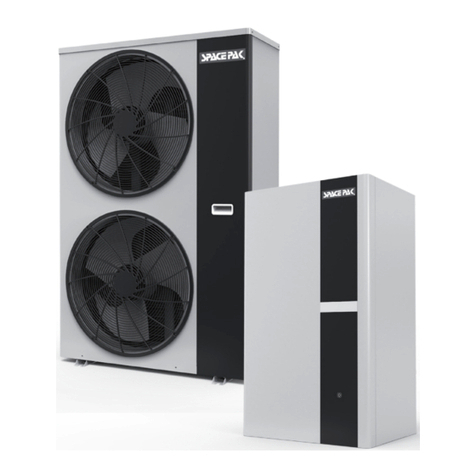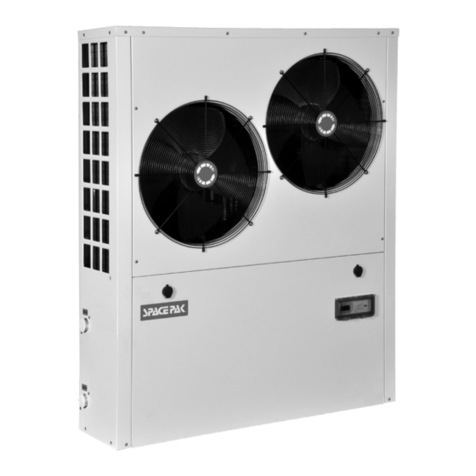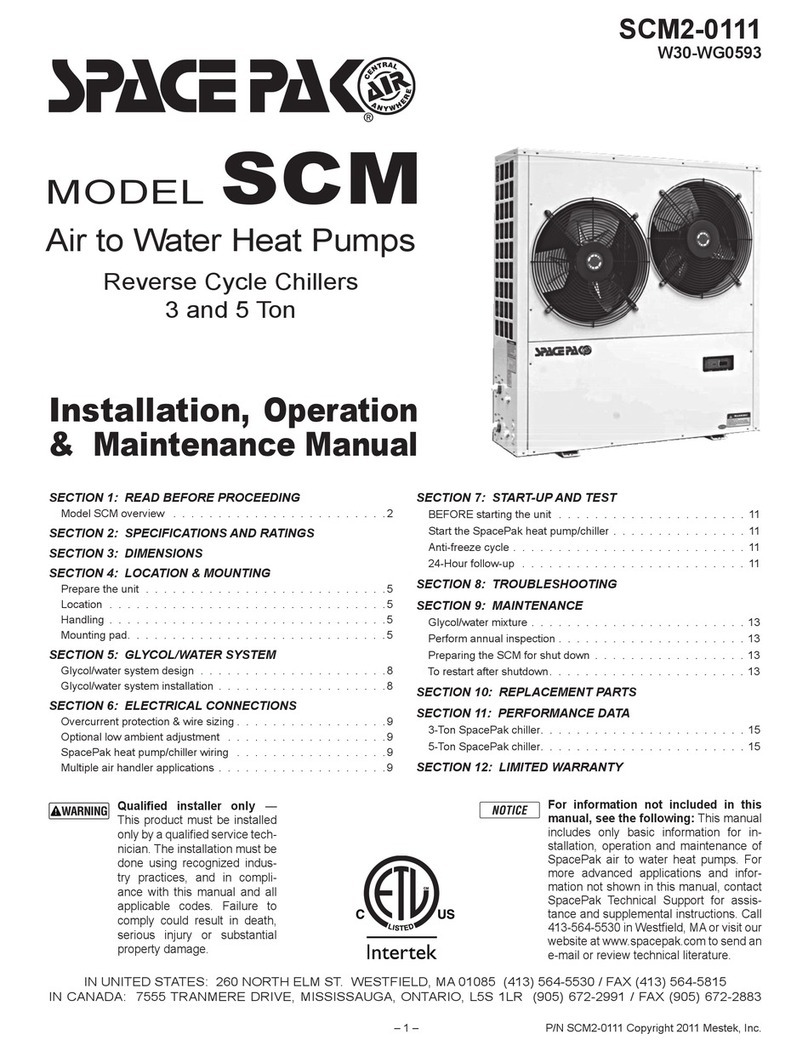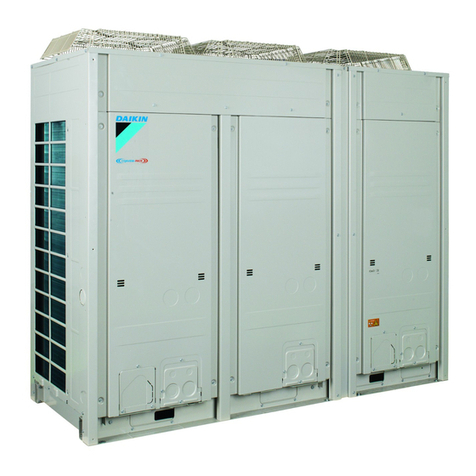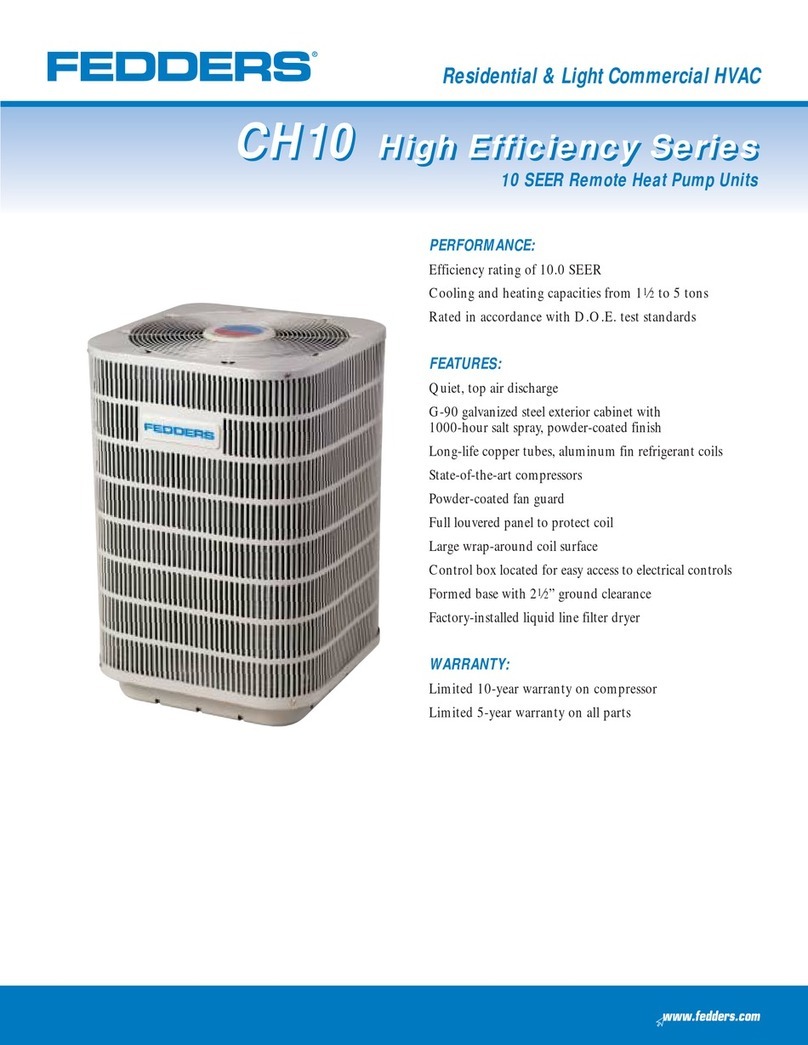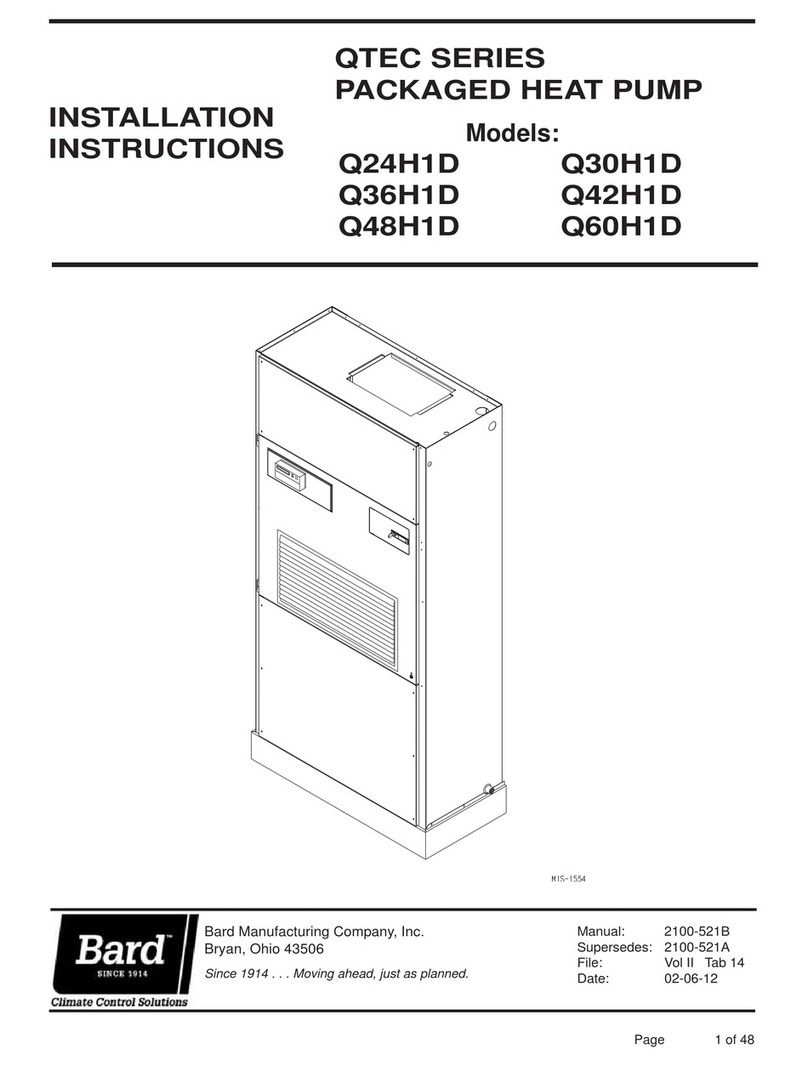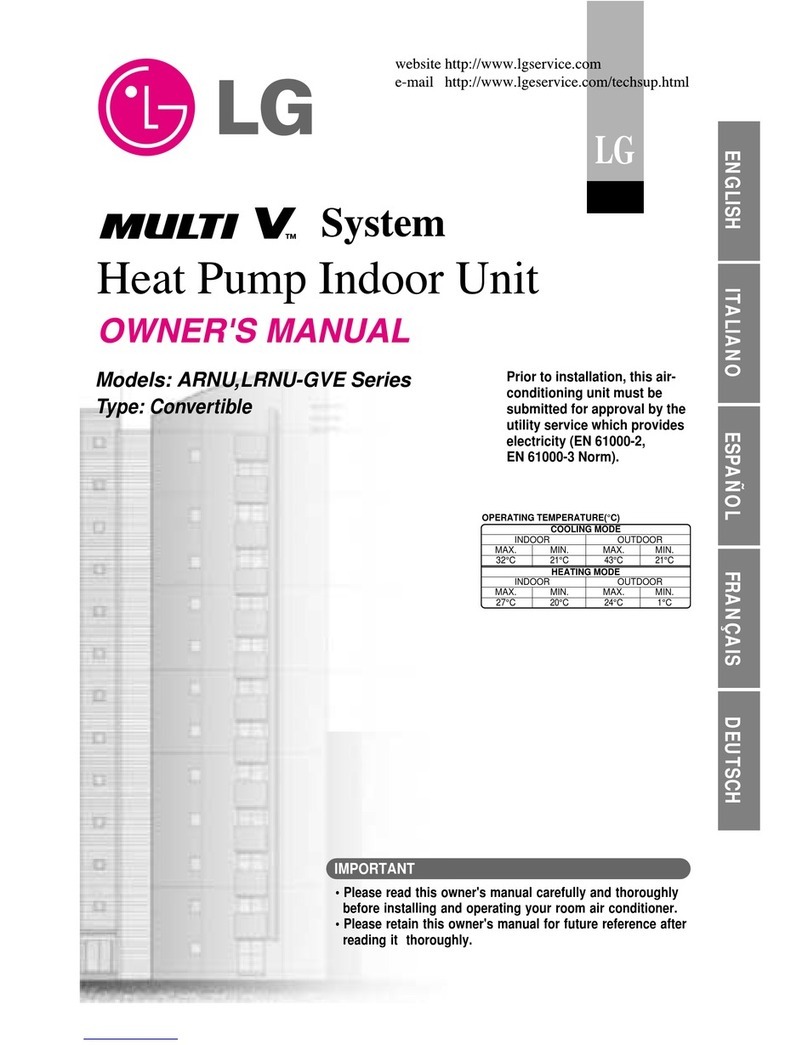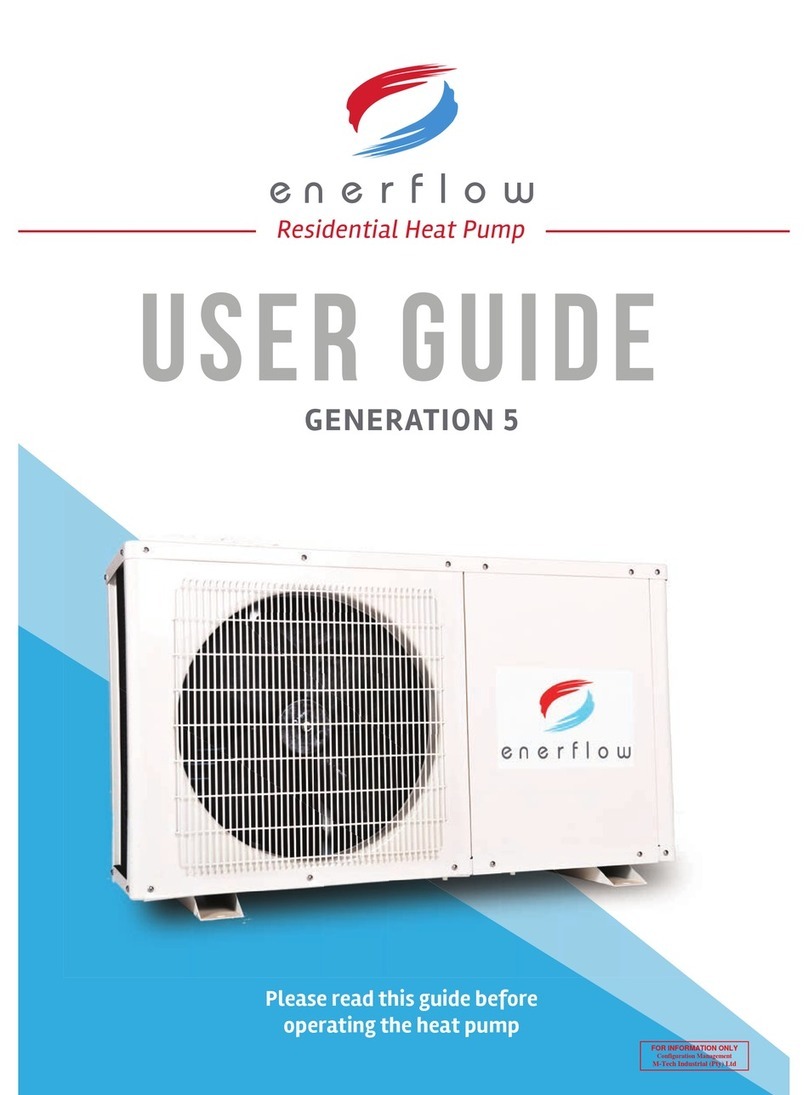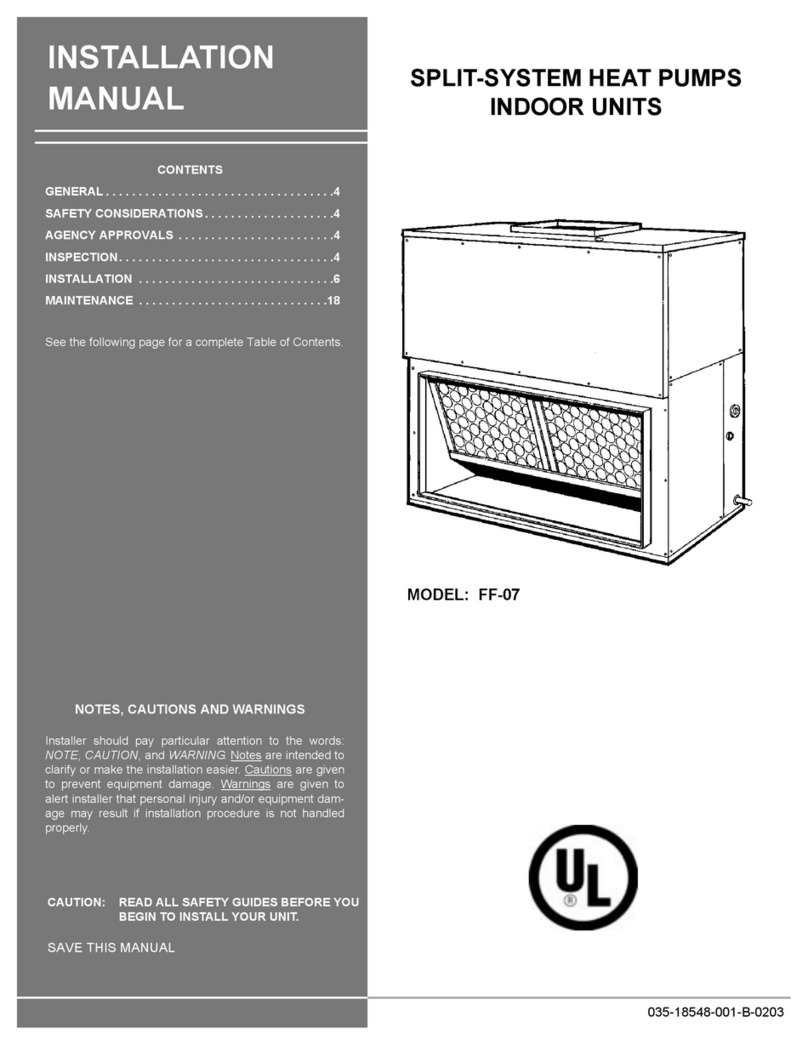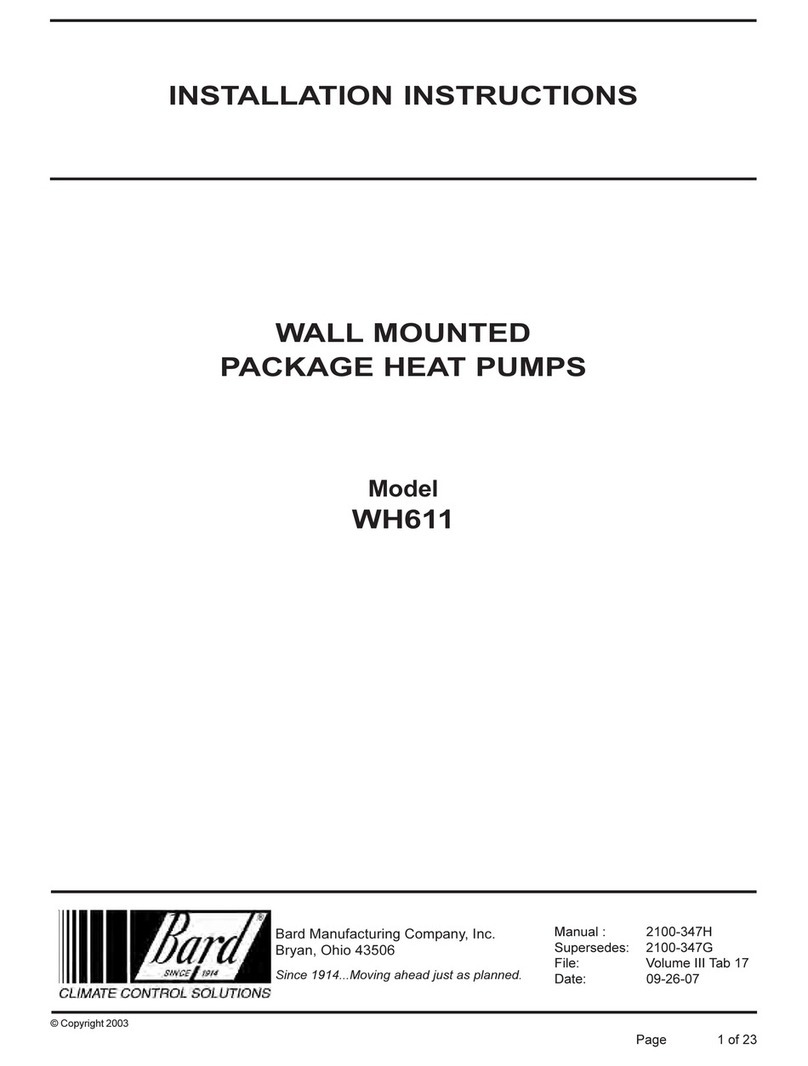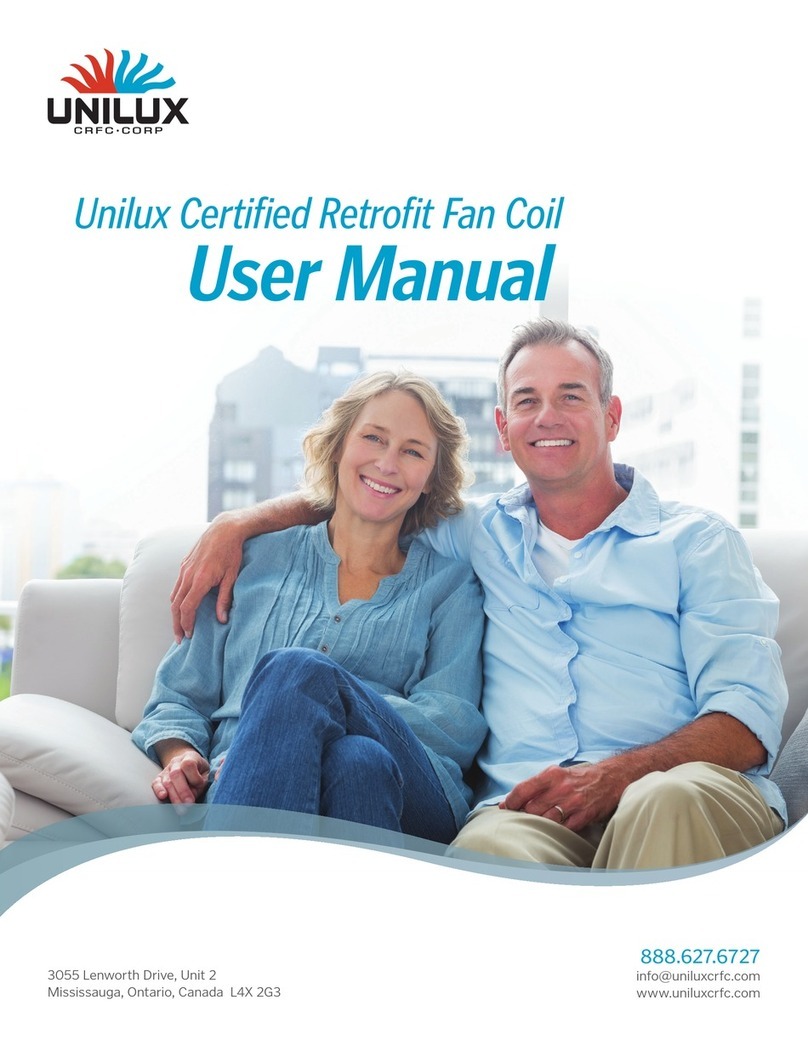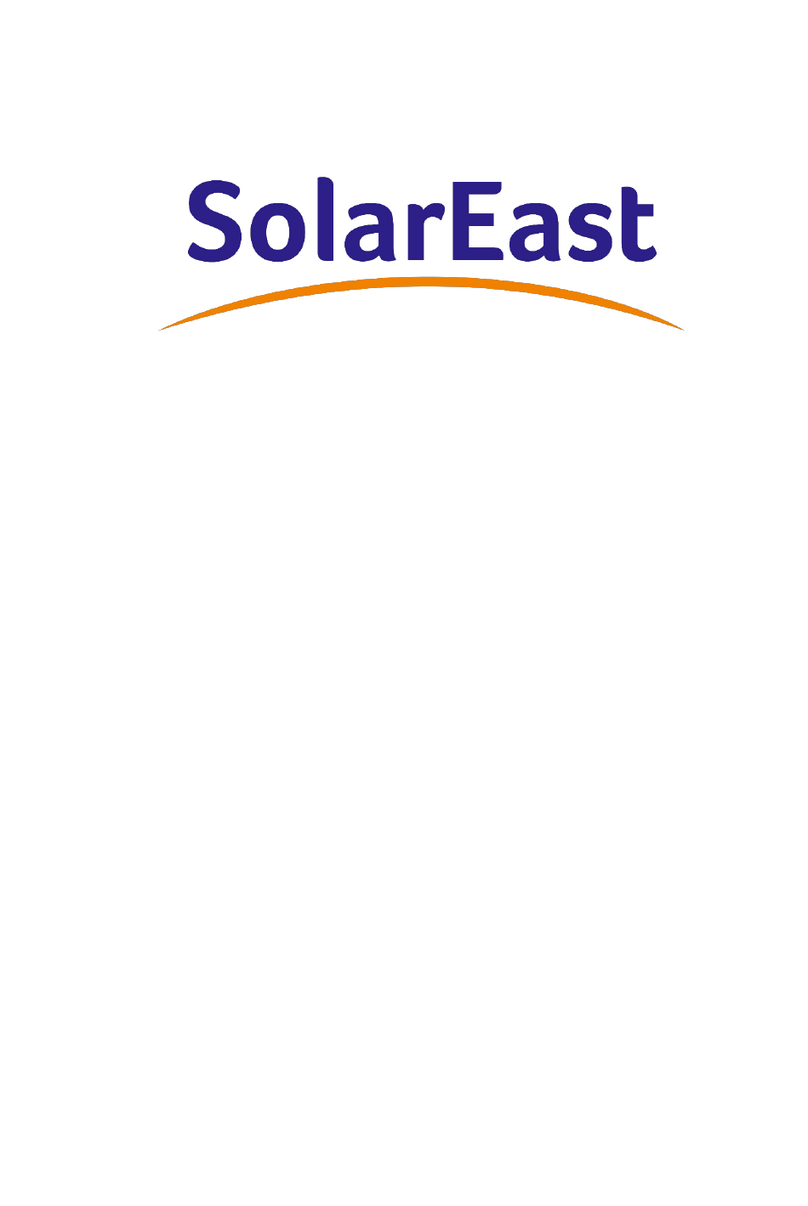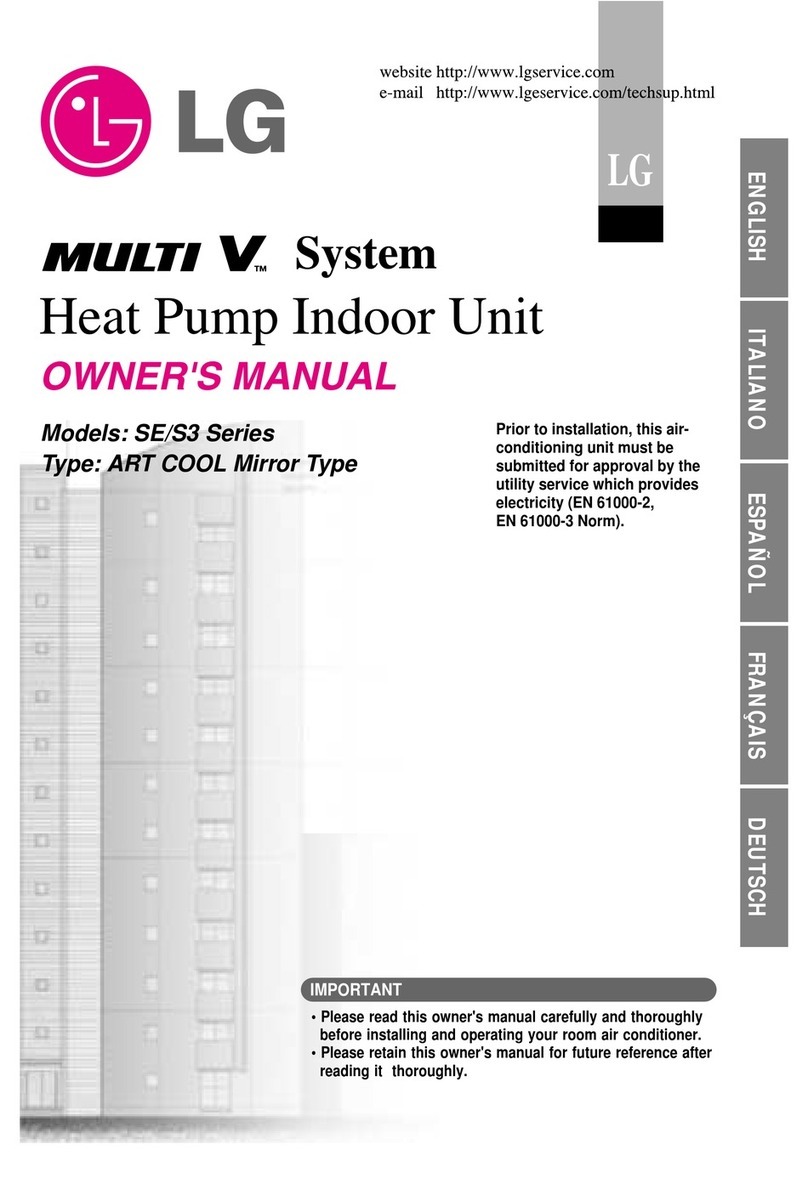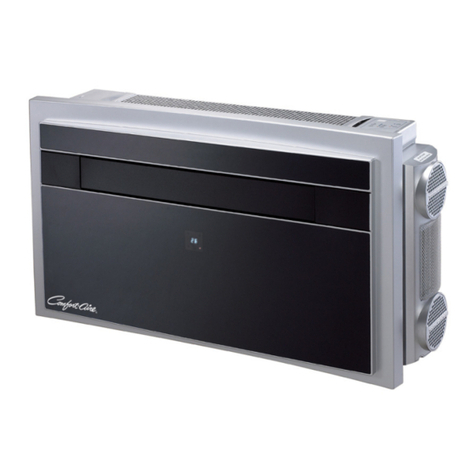
– 2 –
l
MAir to Water Heat Pump — Installation,
peration
Maintenance Manual
Hazard definitions
The following terms are used throughout this manual to bring
attention to the presence of potential hazards or to important
information concerning the product.
Indicates an imminently hazardous situation which,
if not avoided, WILL result in death, serious injury or
substantial property damage.
Indicates an imminently hazardous situation which,
if not avoided, COULD result in death, serious
injury or substantial property damage.
Indicates an imminently hazardous situation which,
if not avoided, MAY result in minor injury or property
damage.
Used to notify of special instructions on installation,
operation or maintenance which are important to
equipment, but not related to personal injury
hazards.
Model SCM overview
The SPACE PAK Model SCM Heat pump/chiller is a self
contained reverse-cycle heat-pump that provides a continuous
supply of heated or chilled water for various purposes, such as:
residential or small commercial building heating and cooling;
and specialty applications, such as computer room cooling or
industrial/agricultural conditioning and dehumidification.
Model SCM Chillers are available in three- and five-ton nominal
capacities. Both use the same general design and operating
principals.
Each chiller contains TWO isolated refrigeration systems of
equal size to cool or heat the delivered water supply. The two
systems can operate individually or in tandem to achieve 50%
or 100% capacity. The major components of each system are:
• A hermetically sealed refrigeration compressor & motor.
• An outside coil to reject heat (in cooling) or absorb heat (in
heating) from the surrounding ambient air.
• A fan and motor to force air over the outside coil; a shell-
and-tube refrigerant-to-water heat exchanger to absorb heat
(in cooling) or supply heat (in heating) to the delivered water
flow.
• An electronic expansion valve to throttle the refrigerant flow
in both heating and cooling modes of operation, responding
to varying load on the system.
• Additionally, each system contains a reversing valve (to
select between heating and cooling operation) and sensors
and safety circuits to monitor and protect the equipment from
potentially damaging or dangerous operating conditions.
A single water circuit connects both internal heat exchangers,
and contains sensors to measure entering and leaving water
temperatures. A mechanical flow switch safety ensures
continuous water flow while either of the two refrigerant
systems is operating. All components are contained within a
supporting structure and enclosure sufficient to allow stand-
alone outdoor installation in all temperate climates.
All operation and protections are managed by a microprocessor
controller which operates the individual systems, determines
all operating parameters, and monitors the condition of each
system. A simple interface communicates with the indoor air
handler, heat exchanger, or other load.
Codes and electrical requirements
• This product must be installed in accordance with all
applicable codes. Where instructions in this manual differ
from specific local requirements, defer to the local codes.
• The electrical installation must also comply with the latest
edition of: in the U. S. — National Electrical Code ANSI/
NFPA No. 70; in Canada — CSA C22.1 Canadian Electrical
Code Part 1. Wiring must be N.E.C. Class 1. Use only copper
wire, rated for 120°F and sized for the load listed in this manual.
• Electrical shock hazard — Disconnect all electrical power
before servicing the unit. Also, the unit must be grounded in
accordance with the Electrical Code listed above.
Refrigerant
• Refrigeration system is factory charged with R410A refrigerant,
and requires no additional service during installation. Any
repair, diagnosis or maintenance service to the refrigeration
system must be performed by a qualified technician. No
alternate refrigerants, lubricants or additives are approved for
this unit. Any use of alternate or non-approved materials in the
refrigeration system may result in personal injury or equipment
damage, and will void the manufacturer’s warranty.
Liquid side
The fluid in the liquid side of the Model SCM
must be an anti-freeze/water mix.
• The antifreeze percentage must be at least 10%. Follow
guidelines in this manual to find the required antifreeze mix
for the application. Thoroughly flush the system before filling.
• The system must be supplied with a pump sized to provide
the minimum flow rates specified in this manual. Pump
selection must consider the pressure loss through the system
and its components plus the pressure loss through the SCM’s
heat exchanger and internal components. The pump must be
rated for use with chilled water/glycol mixture.
• Install a y-strainer at the liquid input of the heat pump as
shown in this manual to prevent damage to the heat
exchanger from sediment.
• DO NOT use for potable water heating. The single-wall
heat exchanger is not suitable for the application.
Ambient limits
• See information in this manual for heating and cooling
performance versus ambient temperature.
• For applications requiring cooling at outdoor temperatures
below 55°F, contact SpacePak Technical Support for
assistance.
• DO NOT disconnect power in cold temperatures. Power
must be on to allow the anti-freeze cycle to operate.
SCM controller
• The SCM electronic controller is factory configured. DO NOT
adjust the control settings. If special operating characteristics
are required, contact SpacePak Technical Support for
availability and instructions.
Failure to comply with all of the guidelines
BELOW could result in death, serious injury or
substantial property damage.
Section 1: READ BEFORE PROCEEDING






















